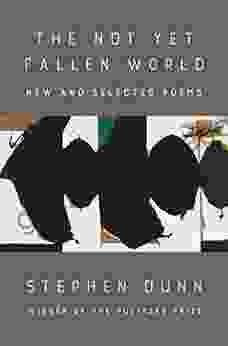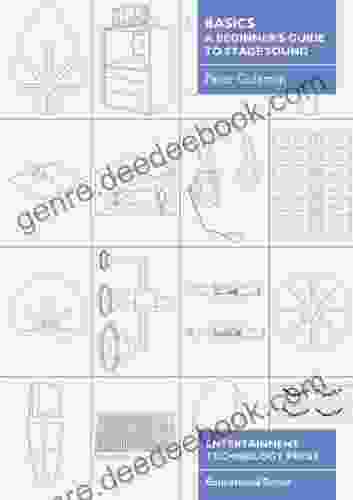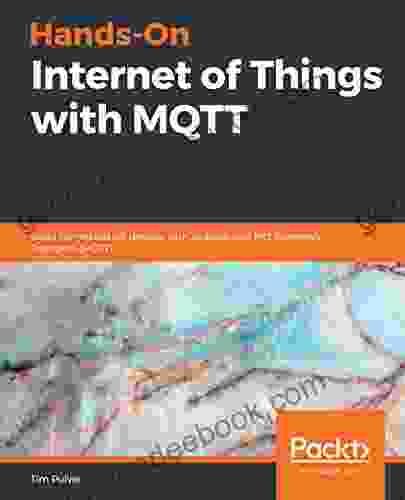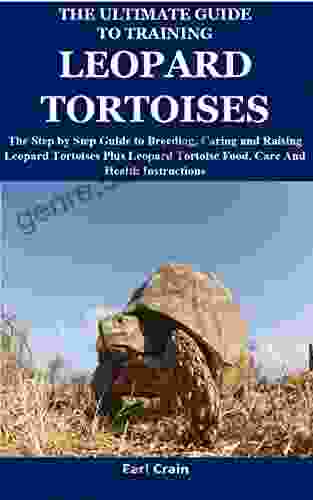Build Connected IoT Devices with Arduino and MQTT Telemetry Transport (MQTT)

<meta name="keywords" content="Arduino, IoT, MQTT, Telemetry, Connected devices, Electronics, Programming"> The Internet of Things (IoT) is rapidly changing the way we live and work. IoT devices are being used in a wide variety of applications, from home automation to industrial monitoring. In order to communicate with each other, IoT devices need a common language. MQTT is a lightweight messaging protocol that is specifically designed for IoT applications. In this tutorial, we will show you how to build connected IoT devices using Arduino and MQTT. We will cover everything from setting up your Arduino board to understanding MQTT topics and subscriptions. By the end of this tutorial, you will be able to build your own IoT devices that can communicate with each other and with the cloud. <h2>What is MQTT?</h2> MQTT is a lightweight messaging protocol that is specifically designed for IoT applications. It is a publish/subscribe protocol, which means that devices can publish messages to a topic and other devices can subscribe to that topic to receive the messages. MQTT is a very efficient protocol, and it can be used to send small amounts of data over low-bandwidth networks. MQTT is a popular choice for IoT applications because it is: * **Lightweight:** MQTT is a very lightweight protocol, which makes it ideal for use on resource-constrained devices. * **Efficient:** MQTT is a very efficient protocol, and it can be used to send small amounts of data over low-bandwidth networks. * **Reliable:** MQTT is a reliable protocol, and it can be used to ensure that messages are delivered even in the event of network disruptions. <h2>Setting Up Your Arduino Board</h2> In order to build connected IoT devices with Arduino, you will need to set up your Arduino board. To do this, you will need the following: * An Arduino board * A USB cable * An MQTT broker Once you have gathered your materials, you can follow these steps to set up your Arduino board: 1. Connect your Arduino board to your computer using the USB cable. 2. Open the Arduino IDE. 3. Select the correct board type and port from the Tools menu. 4. Copy the following code into the Arduino IDE: cpp #include <mqtt.h> MQTTClient client; void setup(){client.begin("127.0.0.1", 1883); client.publish("test", "Hello, world!"); }void loop(){client.loop(); }5. Click the "Upload" button to upload the code to your Arduino board. 6. Open the Serial Monitor in the Arduino IDE. 7. You should see a message that says "Hello, world!" printed in the Serial Monitor. <h2>Understanding MQTT Topics and Subscriptions</h2> MQTT topics are used to organize messages. A topic can be thought of as a channel or a category. Devices can publish messages to a topic, and other devices can subscribe to that topic to receive the messages. MQTT subscriptions are used to specify which topics a device wants to receive messages from. A device can subscribe to multiple topics. To subscribe to a topic, you need to use the `subscribe()` function. The `subscribe()` function takes two parameters: * The topic that you want to subscribe to * The quality of service (QoS) that you want to use The QoS parameter specifies how important it is to receive the message. There are three QoS levels: * **QoS 0:** This is the lowest QoS level. Messages are not guaranteed to be delivered, and they may be lost if the network is congested. * **QoS 1:** This is the middle QoS level. Messages are guaranteed to be delivered at least once, but they may be duplicated if the network is congested. * **QoS 2:** This is the highest QoS level. Messages are guaranteed to be delivered exactly once, even if the network is congested. To publish a message to a topic, you need to use the `publish()` function. The `publish()` function takes three parameters: * The topic that you want to publish to * The payload of the message * The QoS level that you want to use <h2>Building Your Own IoT Devices</h2> Now that you understand the basics of MQTT, you can start building your own IoT devices. Here are a few ideas to get you started: * **Temperature sensor:** A temperature sensor can be used to monitor the temperature of a room or a piece of equipment. The sensor can publish the temperature data to an MQTT topic, and you can use a dashboard or a mobile app to visualize the data. * **Motion sensor:** A motion sensor can be used to detect motion in a room or a building. The sensor can publish the motion data to an MQTT topic, and you can use a dashboard or a mobile app to receive alerts when motion is detected. * **Light sensor:** A light sensor can be used to measure the amount of light in a room or a building. The sensor can publish the light data to an MQTT topic, and you can use a dashboard or a mobile app to visualize the data. These are just a few examples of the many different types of IoT devices that you can build. With a little creativity, you can use Arduino and MQTT to build any type of IoT device that you can imagine. MQTT is a powerful tool that can be used to build connected IoT devices. In this tutorial, we have shown you how to set up your Arduino board, understand MQTT topics and subscriptions, and build your own IoT devices. We encourage you to experiment with MQTT and build your own IoT projects.</mqtt.h>
4.2 out of 5
| Language | : | English |
| File size | : | 102665 KB |
| Text-to-Speech | : | Enabled |
| Enhanced typesetting | : | Enabled |
| Print length | : | 352 pages |
| Screen Reader | : | Supported |
Do you want to contribute by writing guest posts on this blog?
Please contact us and send us a resume of previous articles that you have written.
 Page
Page Text
Text Story
Story Reader
Reader Library
Library Paperback
Paperback Magazine
Magazine Newspaper
Newspaper Paragraph
Paragraph Sentence
Sentence Glossary
Glossary Bibliography
Bibliography Foreword
Foreword Synopsis
Synopsis Annotation
Annotation Scroll
Scroll Tome
Tome Narrative
Narrative Biography
Biography Memoir
Memoir Encyclopedia
Encyclopedia Thesaurus
Thesaurus Narrator
Narrator Character
Character Librarian
Librarian Stacks
Stacks Archives
Archives Periodicals
Periodicals Research
Research Lending
Lending Reserve
Reserve Journals
Journals Reading Room
Reading Room Literacy
Literacy Study Group
Study Group Thesis
Thesis Dissertation
Dissertation Awards
Awards Book Club
Book Club Textbooks
Textbooks Kenneth Wellesley
Kenneth Wellesley Michael Gray
Michael Gray Tarrin P Lupo
Tarrin P Lupo Vahram Muratyan
Vahram Muratyan Henry Brighton
Henry Brighton Matthew Continetti
Matthew Continetti Lillian Sable
Lillian Sable Brian Burns
Brian Burns David Youland
David Youland Keith Snell
Keith Snell Michael C Bond
Michael C Bond Kay Bratt
Kay Bratt Sedat Turhan
Sedat Turhan Mj Nightingale
Mj Nightingale Bradley Gerstman
Bradley Gerstman Helena Garcia
Helena Garcia Elizabeth Carlyon
Elizabeth Carlyon Wolfgang Gabler
Wolfgang Gabler Ivy Junetree
Ivy Junetree Martine Leavitt
Martine Leavitt
Light bulbAdvertise smarter! Our strategic ad space ensures maximum exposure. Reserve your spot today!

 Dustin RichardsonBaby Pigeon Stupid Cookbook: The Ultimate Guide to Raising and Caring for...
Dustin RichardsonBaby Pigeon Stupid Cookbook: The Ultimate Guide to Raising and Caring for...
 Henry David ThoreauThe Not Yet Fallen World: Exploring the Intricacies of a Captivating Fantasy...
Henry David ThoreauThe Not Yet Fallen World: Exploring the Intricacies of a Captivating Fantasy... Ivan TurgenevFollow ·11.7k
Ivan TurgenevFollow ·11.7k Martin CoxFollow ·3.8k
Martin CoxFollow ·3.8k Brady MitchellFollow ·10.3k
Brady MitchellFollow ·10.3k Jake CarterFollow ·13.5k
Jake CarterFollow ·13.5k Frank MitchellFollow ·2.1k
Frank MitchellFollow ·2.1k Thomas HardyFollow ·16.4k
Thomas HardyFollow ·16.4k Alex ReedFollow ·18.9k
Alex ReedFollow ·18.9k Jerome PowellFollow ·12.3k
Jerome PowellFollow ·12.3k

 Rodney Parker
Rodney ParkerBasics Beginner Guide To Stage Sound
Start with a good source. The...

 Glenn Hayes
Glenn HayesKiwi in the Realm of Ra: Exploring the Mystical Kiwi...
Origins and...

 John Grisham
John GrishamAdvances In Marine Biology Volume 71
Unveiling the Hidden Wonders...

 Edison Mitchell
Edison MitchellGoodbye Brings Hello: Embracing the Transformative Power...
In the tapestry of life, endings...
4.2 out of 5
| Language | : | English |
| File size | : | 102665 KB |
| Text-to-Speech | : | Enabled |
| Enhanced typesetting | : | Enabled |
| Print length | : | 352 pages |
| Screen Reader | : | Supported |












